NACA NASA X-1E Model
Production Time 9 to 10 weeks
Shipment is by FedEx, UPS or DHL International Express Courier with a normal door-to-door delivery time worldwide of within 2-3 business days after dispatch. Due to the current volatility of world fuel prices, the amount mentioned here is our best estimate for DHL and UPS and may be subject to change at the time of shipping.

Product statistics
Length: 17 Inches (43.2 Centimeters)Wingspan: 12.6 Inches (32 Centimeters)
Height: 6 Inches (15.2 Centimeters)
Scale: 1:22
$239.50
Manufacturer: NACA NASA
Production Time 9 to 10 weeks
-
United States dollar ($)
-
Pound sterling (£)
-
Euro (€)
-
Australian dollar ($)
-
Canadian dollar ($)
-
Singapore dollar ($)
-
Swiss franc (CHF)
-
Japanese yen (¥)
-
Danish krone (kr.)
-
Hong Kong dollar ($)
-
Norwegian krone (kr)
-
Swedish krona (kr)
General Product Description
Our ReplicaHangar NACA NASA X-1E Model exhibits unique, unrivaled quality and detailed design to come as close as possible to the accuracy of the actual plane. It comes as standard with a robust, durable base or stand which is available in a variety of different finishes designed to match your own personal requirements including solid wood, wood with polished metal supports or adjustable wood wall mount and will be ready within about 9-10 weeks from placement of order.
The NACA NASA X-1E Model is made of the finest kiln dried renewable mahogany wood (commonly known as Lauan or Meranti) which has undergone many stages of carving and meticulous and careful sanding giving the beautiful, finished museum quality masterpiece. Many collectors and model connoisseurs demonstrate their preference for genuine handmade and hand painted mahogany wood models rather than plastic or die cast (diecast) alternatives due to the overall look and totally different feel of the item - we trust you will find the same. We can however, if required produce the same model in Solid Cast Resin so just click and contact us for further information. Our craftsmen and gifted artisans ensure that our finely handcrafted model air and spacecraft match the precise blueprint details of the original version. The paint scheme, markings and parts are closely matched, reflecting the original craft. This stylish top-quality desktop replica model will surely enthrall anyone who receives this as a gift and for sure one of the most appropriate and desirably collectable gifts for every Space or Science Fiction enthusiast and avid Spaceship or Scifi collector whilst also displaying a perfect resemblance to the actual NACA NASA X-1E Model.
If you require, we can also make the NACA NASA X-1E Model in any other markings, livery or colour scheme you require and if necessary, in a different size or scale. Just click here to contact us with a description or photographs of what you require, and we will let you have a quotation for the necessary customization by return email. We can also make bespoke scale replicas of any other private / civil commercial airliner or airliners, helicopter, glider, gliders with engines, military jet, warplane jets, propeller warplanes, biplane, triplane, tail fin, spacecraft, rocket or NASA model you require in any airline, military or civilian livery or colors. We also produce Gerry Anderson models, model airship, blimp, dirigible, blimps, boat, and ship collectibles. Wall plaque or seal for military, government or private customers. Wall plaque or seal for military, government or private customers. Again, by clicking here to contact us just let us know exactly what you need.
The NACA X-1E was the last of the X-1 series of aircraft, and its construction benefited from the lessons of earlier research aircraft programs. This included the explosions which destroyed the X-1D and the X-1-3 research aircraft, the poor performance of the X-3, and the destruction of both X-2s..
In 1951, the Air Force expected to begin flights with the X-1D, while the NACA was to soon receive the X-1-3. Both aircraft could reach speeds in excess of Mach 2, but were lost in explosions before they were able to produce data. The X-1A and X-1B would not be delivered for two more years, leaving only the NACAs X-1-2 (serial number 46-063) still flying. The Air Force had already retired the X-1-1 (serial number 46-062), giving it to the Smithsonian. Soon after, the NACA discovered that the high-pressure nitrogen spheres in the second X-1 were likely to fail due to metal fatigue. The aircraft made its 54th and final flight on Oct. 23, 1951..
At this juncture, the NACA decided to flight test the characteristics of very thin wings at transonic speeds. Accordingly, NACA engineers proposed the X-1-2 be modified with the new airfoil and a new turbopump fuel system (which eliminated the high-pressure nitrogen spheres). The High-Speed Flight Station (now the NASA Dryden Flight Research Center, Edwards, Calif.) made some important modifications. The side hatch was replaced by a upward opening canopy, similar to that on the D-558-II. The new canopy allowed addition of an ejection seat, and gave the pilot easier access in and out of the cockpit. Technicians also installed the new turbopump fuel system. Meanwhile, Stanley Aviation Company built the new thin wings, a mere 3 3/8th inches thick at the wing root, fitted with over 200 pressure openings for aerodynamic data, and another 343 strain gages for structural loads and aerodynamic heating measurements. Similar in thickness to those on the X-3, the wings of the emerging aircraft – called the X-1E – would supply the Mach 2 flight data which the X-3 had been unable to provide due to its poor performance..
Once the modifications were completed, several months of ground tests were required before the aircraft could take flight. NACA research pilot Joe Walker was selected as project pilot. Walker made the first X-1E glide flight on Dec. 15, 1955. The XLR-11 engine and the turbopump had a number of problems which forced Walker to shut them down. The X-1E did not fly again until April 1956, but, despite some problems, it made good progress. On the X-1Es sixth flight, on June 7, Walker reached Mach 1.55, in what was the airplanes first supersonic flight since being modified. Walker raised this to Mach 1.74 on June 18, Mach 2 on Aug. 31, and Mach 2.1 on Sept. 14..
This speed buildup was followed by three flights that were marred by engine and turbopump problems. It was not until April 1957 that flights resumed. The X-1E suffered another setback on May 15, 1957, when after a Mach 2 flight, the aircraft was severely damaged in a landing accident. Repairs to the X-1E continued through the summer, and the aircraft did not fly again until Sept. 19, 1957. The X-1E ended its flights for the year on a high note, however, when on Oct. 8, the aircraft reached Mach 2.24. This was the highest speed it would achieve..
The X-1Es research flights indicated the aircraft had marginal directional stability at high Mach numbers. The X-1E, despite all the modifications, still had the original bullet-shaped X-1 fuselage, so this would be expected. To improve directional stability, two ventral fins were added to the aft fuselage. When flights resumed in May 1958, Walker tested the aircrafts stability and control with the fins..
Walker left the X-1E program after 21 flights, and NACA research pilot John McKay took his place. McKay made two checkout flights in the X-1E during September 1958. The X-1E now was used to test engine modifications and a new fuel. The rocket chamber pressure was increased, and nozzle extensions added to increase engine thrust. (Similar nozzle extensions were also added to the D-558-II and X-2.) McKay flew a pair of research flights in October 1958 to test these engine changes. His Nov. 6, 1958, X-1E flight was a low-altitude/low-Mach test of a new propellant called U-Deta. This was a mixture of unsymmetrical dimthydrazine and diethylene triamine which replaced the alcohol/water mix. The engine modifications and the new propellant were expected to boost the X-1Es maximum speed to nearly Mach 3..
After McKays November 6 flight, which was his fifth flight and the 26th by the X-1E, the aircraft was grounded for inspection and installation of a new ejection seat. During the inspection, X-rays showed a significant crack in the fuel tank wall. The cost of repairing the crack, along with the impending arrival of the X-15, meant the end of the X-1E program. A number of the research projects intended for the X-1E were transferred to F-104s, which had similar performance. The X-1E is on display in front of the Dryden headquarters building.
| Weight | 6 kg |
|---|---|
| Dimensions | 17 × 12.6 × 6 in |
Be the first to review “NACA NASA X-1E Model” Cancel reply
Related products
Space, NASA & Experimental
Space, NASA & Experimental
Space, NASA & Experimental
Space, NASA & Experimental
Space, NASA & Experimental
Space, NASA & Experimental
Space, NASA & Experimental
Moonlight SY3 Godzilla Destroy All Monsters Aerial Vehicle Model
Space, NASA & Experimental

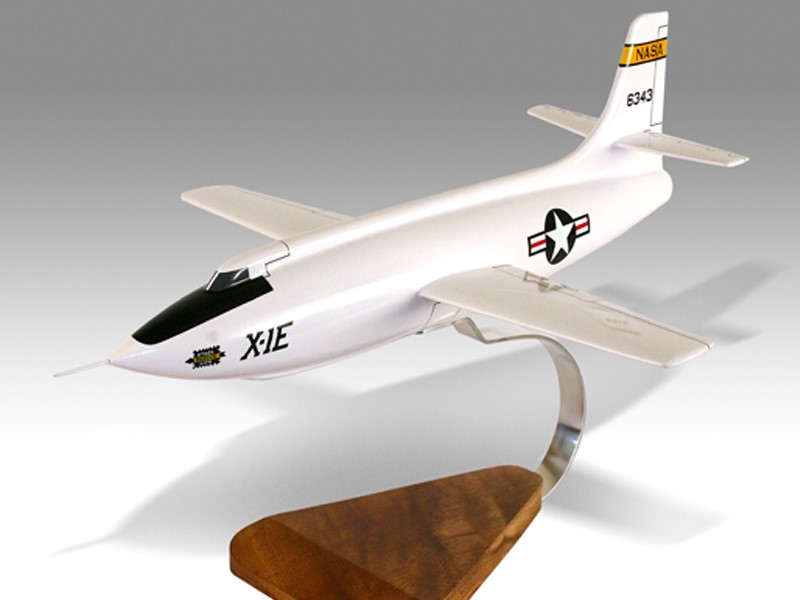
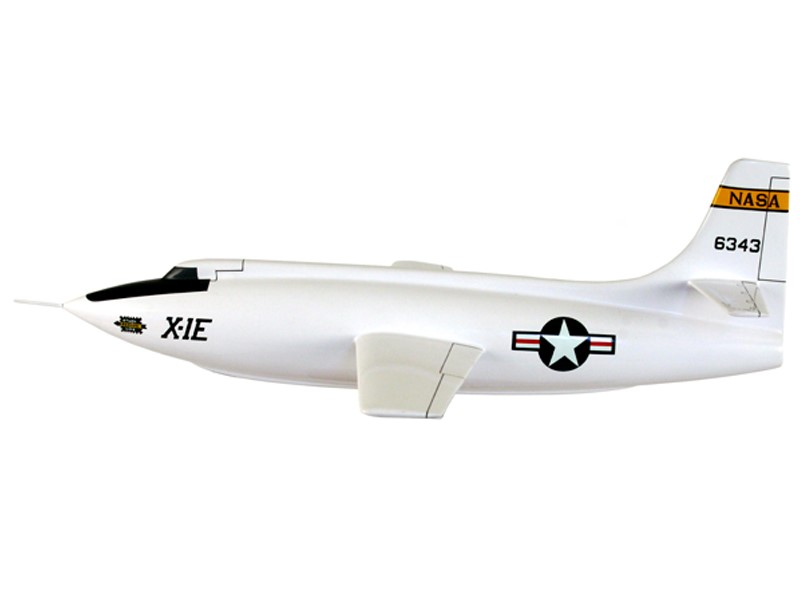

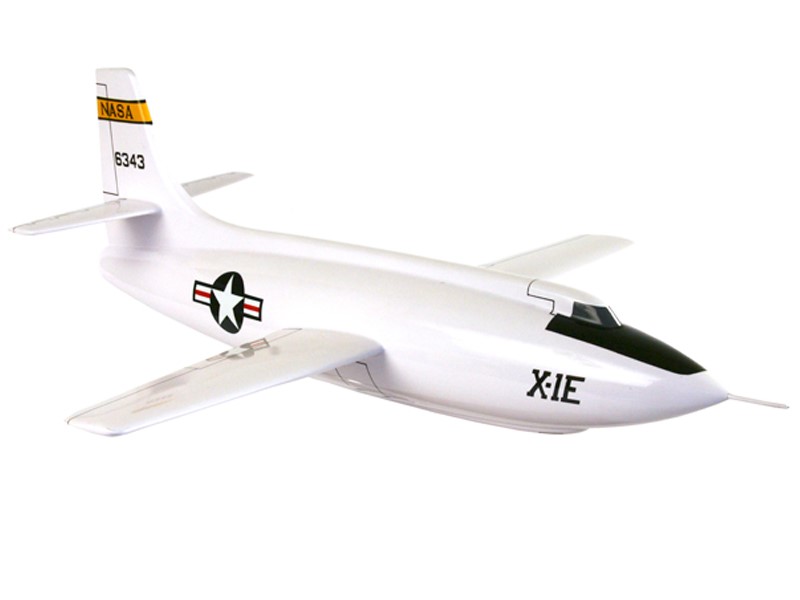

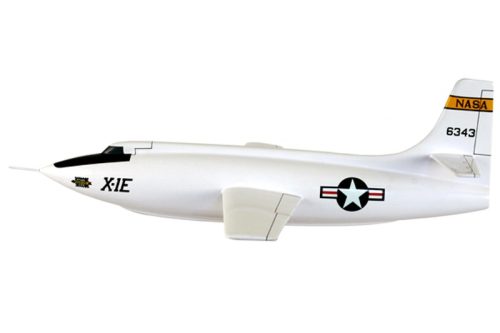
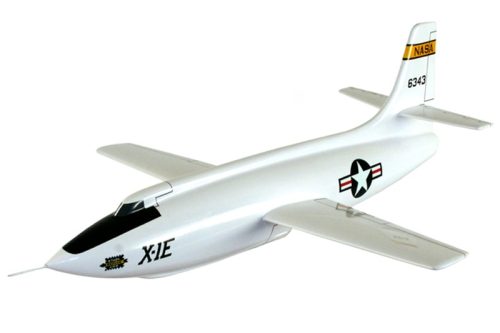

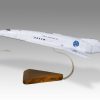

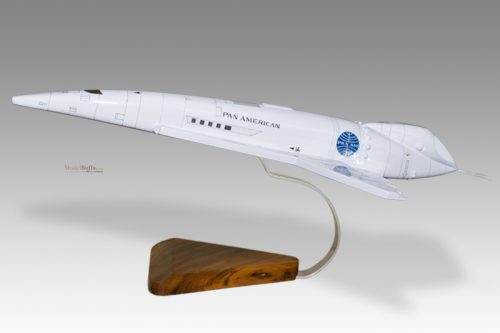
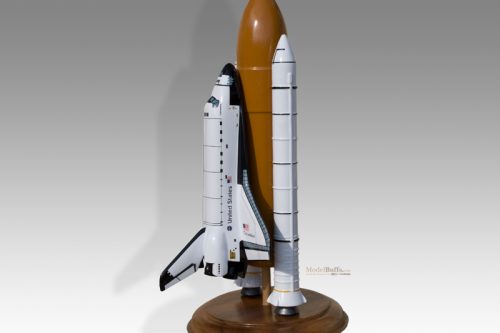

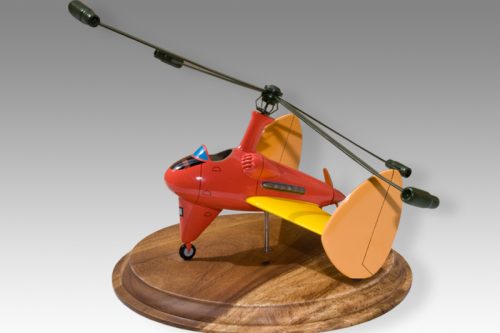
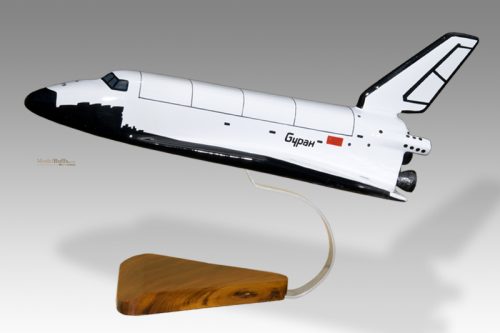



Reviews
There are no reviews yet.